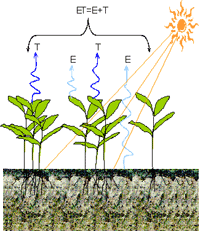Agricultural Research Division of IANR

West Central Research and Extension Center, North Platte
Date of this Version
2011
Citation
The Professional Animal Scientist 27 ( 2011 ):251–256
Abstract
Two locations on a commercial ranch in the Nebraska Sandhills were used to determine the effects of maternal nutrition on male progeny. Crossbred, spring-calving, multiparous cows were managed in a year-round grazing system. Cows at one location (yr 1 = 754; yr 2 = 700) received the equivalent of 0.95 kg/d (DM; 31.6% CP; HN) of supplement, and cows at the second location (yr 1 = 673; yr 2 = 766) received 0.37 kg/d (DM; LN) of the same supplement delivered 3 times weekly while grazing winter range from December through February. After weaning, a random group (yr 1 = 50 HN, 50 LN; yr 2 = 50 HN, 50 LN) of male progeny entered the feedlot and were slaughtered 218 d later. There was a significant (P ≤ 0.03) year × treatment interaction, with yr-1 HN steers having the greatest reimplant BW, final BW, DMI, G:F ratios, and HCW. Year-2 HN steers had greater (P = 0.03) proportions grading USDA Choice or greater compared with yr-1 HN and LN steers. Marbling scores were greater for HN steers compared with LN steers (P = 0.05) and steers from yr 2 compared with yr 1 (P < 0.01). Year-2 steers had greater (P < 0.01) proportions grading USDA Choice compared with yr-1 steers. Increased maternal nutrition resulted in increased steer performance and carcass characteristics in yr 1 and greater marbling scores in HN steers compared with LN steers.

